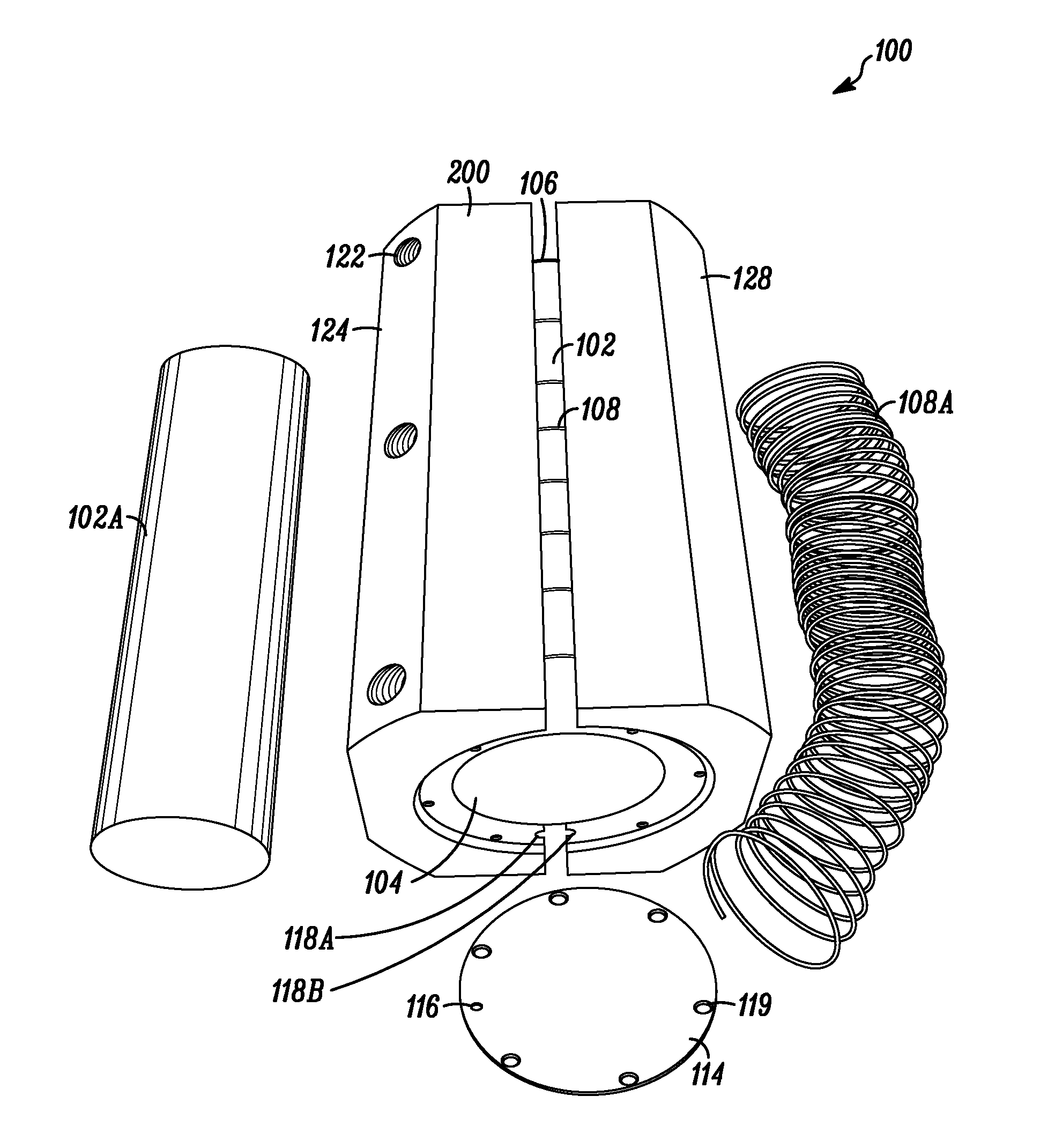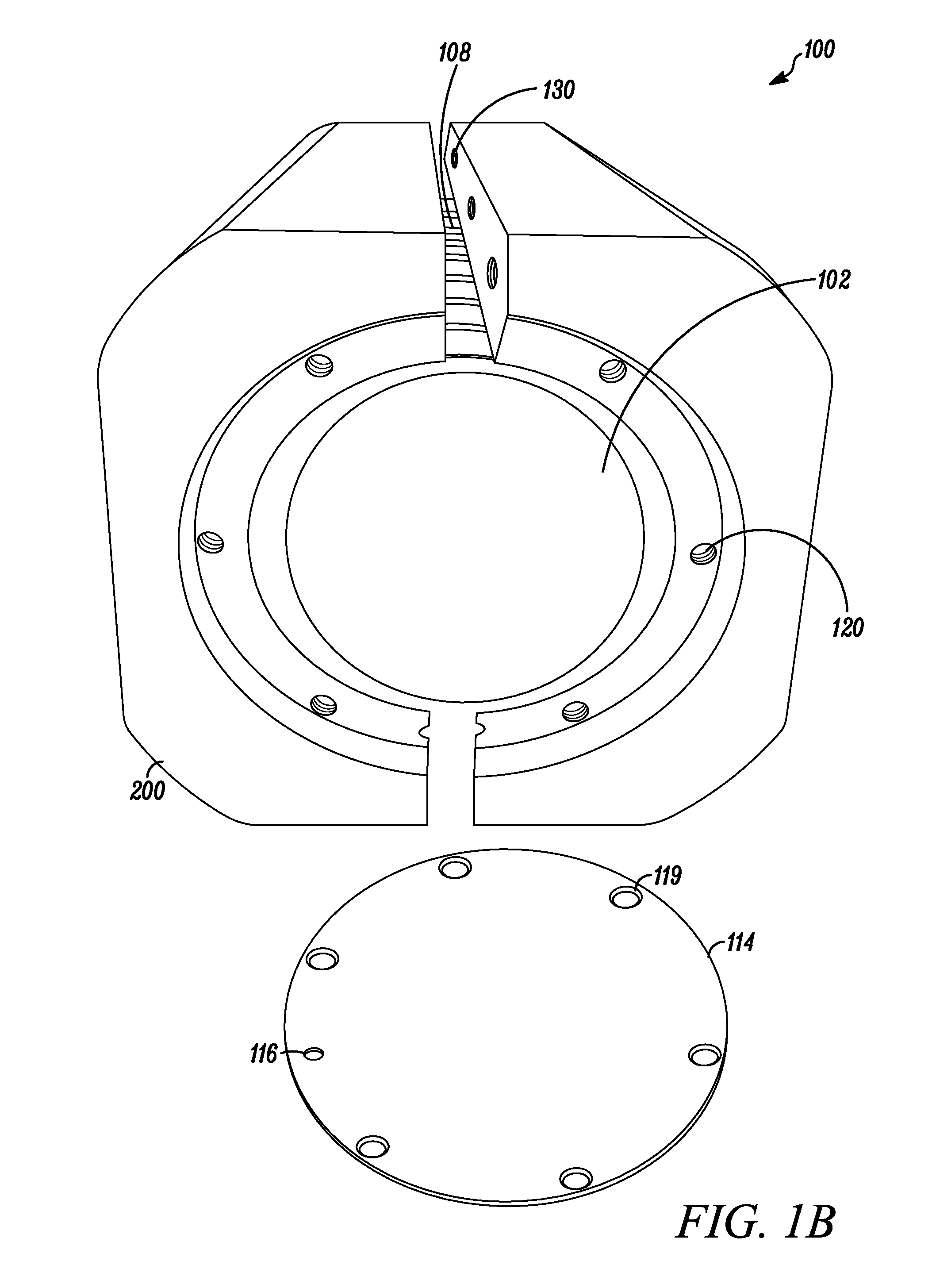Process and apparatus for continuous flow synthesis of nanocrystals
- Summary
- Abstract
- Description
- Claims
- Application Information
AI Technical Summary
Benefits of technology
Problems solved by technology
Method used
Image
Examples
example 1
[0176]FIG. 3 is a process flow diagram illustrating one example of a rudimentary system embodying the reactors provided herein. Nanocrystal precursor solutions are prepared and transferred to a syringe. The syringes are loaded onto computer-controlled metering pumps 2 (syringe or gear pump). The mixture of precursors is delivered to a mixer 3 and is then transferred to the reactor 4. In some embodiments, the system comprises two or more reactors connected in serial and / or parallel. Heating is provided to the reactor as needed, either by heating devices in or on the core and / or sleeve of the reactor, or by placing the reactor into a heated zone such as an oven. At the outlet of the reactor 4, the product stream passes through a flow-through monitoring cell 5 which includes an ultraviolet light source to excite the nanocrystals in the product stream and a CCD-based miniature spectrometer to measure the absorbance spectra from the nanocrystals. At the outlet of the ...
example 2
Synthesis Of InP Nanocrystals
[0178]InP core nanocrystals were prepared by continuous flow synthesis as follows. First an indium precursor was prepared by adding 0.88 g indium (III) acetate, 0.254 g oleic acid and 14.8 g 1-octadecene that has been purified to remove oxygen and water (ODE) to a reaction flask under inert atmosphere. The contents of the flask were heated to 260° C. while applying a flow of nitrogen to remove acetic acid that may have formed. After 5 minutes at 260° C., the flow of nitrogen was stopped. The solution was allowed to cool before drawing the entire contents of the flask into a gastight glass syringe. Next a phosphorus precursor was prepared by adding 0.45 g (TMS)3P to 7.101 g ODE under inert atmosphere. The resulting phosphorus precursor solution was drawn up into a second gastight glass syringe. Finally, 20 mL of ODE was loaded into a third gastight syringe. The three syringes were connected to the flow system at pumps 1-3 as depicted in FIG. 3 and the rea...
example 3
Investigation of Reaction Parameters in InP Core Synthesis
[0179]This example describes the use of a reactor as described herein in investigating effects of various reaction parameters, including temperature, residence time, and In:P ratios on nanocrystal synthesis. A continuous flow reaction was performed using the apparatus depicted in FIG. 1. Using a novel flow through reactor in a flow through system, the equivalent of 16 batch experiments were carried out in less than 5 hours. If one operator can run four reactions per day, then it would have taken four days in stirred-pot mode, demonstrating an advantage of the present system for the optimization of nanocrystal reaction parameters. In this time, the effect of residence time, In:P ratio and temperature on the synthesis of the nanocrystal product was investigated. Plotting absorbance data of the products generated in the various reaction conditions, the interaction plots indicate that increased residence times, increased In:P rat...
PUM
 Login to View More
Login to View More Abstract
Description
Claims
Application Information
 Login to View More
Login to View More - R&D
- Intellectual Property
- Life Sciences
- Materials
- Tech Scout
- Unparalleled Data Quality
- Higher Quality Content
- 60% Fewer Hallucinations
Browse by: Latest US Patents, China's latest patents, Technical Efficacy Thesaurus, Application Domain, Technology Topic, Popular Technical Reports.
© 2025 PatSnap. All rights reserved.Legal|Privacy policy|Modern Slavery Act Transparency Statement|Sitemap|About US| Contact US: help@patsnap.com



